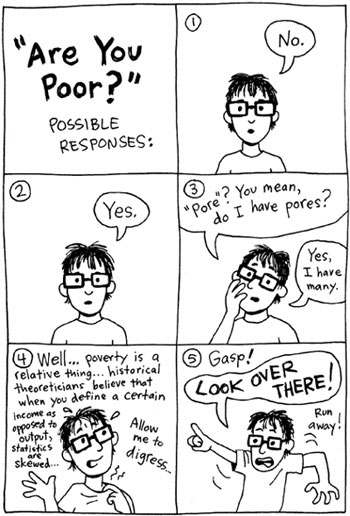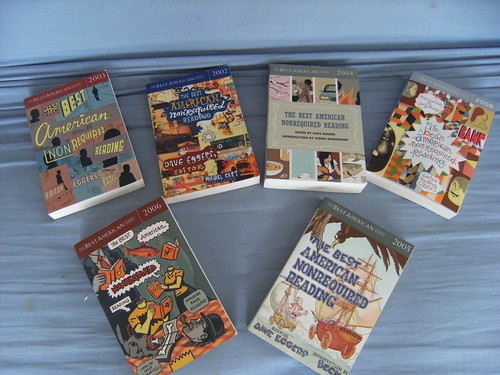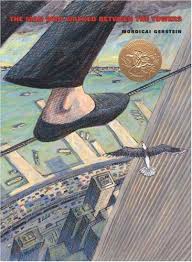


Wow.
I just finished up Sherman Alexie’s The Absolutely True Diary of a Part-Time Indian and it just blew me away with its voice, power and creativity. No wonder it won the National Book Award a few years back. It was one of those books that stays on the peripheral vision and then, finally, you get to it and you now know why it was always out there, waiting for you to read.
The book follows the life of high student student named Junior, who is a Spokane indian who lives on a reservation and realizes he has to get off the reservation or else he will die — either tragically and quickly (through some alcohol-related incident, he is certain) or slowly (through the loss of his dreams). So, he decides to attend school at the white high school just outside the skirts of the reservation and doors both open and close for Junior as a result. He never quite fits in with his new school (he’s the line Indian) and his friends back home (including his best friend, Rowdy, a warrior of the modern day reservation) think him a traitor for leaving their school.
The book is illustrated with comics, although it is not a graphic novel. But Junior makes comics to understand his life and the world around him, and the book uses this form in imaginative ways (thanks to illustrator Ellen Forney, who is featured in a Q&A at the end of the book that is quite interesting to read).
I don’t usually dog-ear books but I did to this line by Junior:
“I think the world is a series of broken dams and floods, and my cartoons are tiny little lifeboats.”
Isn’t that a great line? I love that line.
Then, later, as Junior is talking with his new white friend, Gordy, they realize that the comics are actually a serious interpretation of the world. Junior tells Gordy:
“I take them seriously. I use them to understand the world. I use them to make fun of the world. To make fun of people. And sometimes I draw people because they’re my friends and family. And I want to honor them.”
One of the issues he struggles with is poverty. See this sample illustration at a moment when his “white” friends suddenly realize how poor he really is (he can’t pay for food at Denny’s):

Pick up this book if you can. You won’t be disappointed.
Peace (on the pages),
Kevin







 My review: The innocence of millions were lost to comic books, or so politicians would have had us believe. Yet the genre survived intact – thankfully.
My review: The innocence of millions were lost to comic books, or so politicians would have had us believe. Yet the genre survived intact – thankfully.